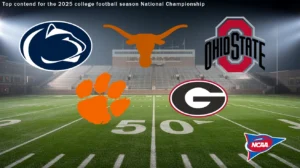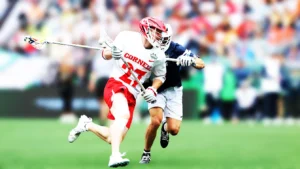The NIL Era Has Officially Changed College Sports Forever
The world of college athletics has entered a new chapter — one where student-athletes are no longer just playing for school pride, but for real compensation. Thanks to Name, Image, and Likeness (NIL) legislation, athletes are now cashing in on endorsement deals, social media branding, and commercial opportunities while still maintaining their college eligibility.
“This isn’t just a trend — this is a total landscape shift,” said NCAA analyst Rachel Conrad. “It’s changed how players choose schools, how teams recruit, and even how fans interact with college sports.”
What Is NIL and Why It Matters
NIL refers to the right of college athletes to profit from their own name, image, and likeness. In simple terms, it allows players to:
- Sign endorsement deals with brands
- Appear in commercials or local ads
- Monetize their social media platforms
- Get paid for autographs, camps, or merchandise
This movement became official in July 2021, but its full impact is now being felt — especially in powerhouse programs across football, basketball, and even women’s sports.
Big Numbers Behind the New Compensation
- Over $1 billion in NIL deals projected in 2025 alone
- Top athletes like football quarterbacks and women’s basketball stars earn six-figure deals
- Social media influence plays a huge role — players with over 100k followers command major attention from brands
Example: University of Texas quarterback Jalen Decker reportedly signed a $2.3M NIL package including deals with Adidas, Gatorade, and a national insurance chain.
Recruitment & Transfer Portal = Business Moves
What was once a recruiting battle between facilities and traditions is now about:
- Which school can boost your brand?
- Which collective or sponsor pool is behind the program?
- What kind of local or national exposure can you expect?
The transfer portal has turned into a college free agency market — where athletes jump schools not just for playing time, but for better financial positioning.
Women’s Sports Athletes Winning Big
This isn’t just about football and basketball.
Stars like Caitlin Clark (Iowa) and Angel Reese (LSU) have become national influencers, landing NIL deals that rival some professional athletes. Their social following, media presence, and elite performance make them marketing gold.
“It’s empowering to control our own future and not wait until pro,” said Reese in a March interview.
The Debate: Fair or Financially Risky?
Critics argue that the NIL era is creating a pay-to-play system that undermines the spirit of amateurism and creates recruiting chaos.
Supporters, however, say it’s long overdue compensation for athletes who’ve generated billions for schools, sponsors, and networks — often without seeing a dime.
What’s Next?
Expect tighter regulation and possibly a federal NIL framework, but one thing’s clear:
College athletes are no longer unpaid amateurs. They’re entrepreneurs, influencers, and in some cases — millionaires before they ever go pro.
The question for schools now isn’t just how many games they’ll win…
It’s how much value they can offer to the next wave of high school talent.

